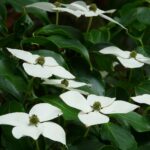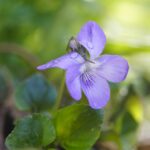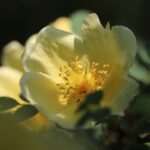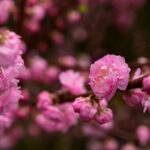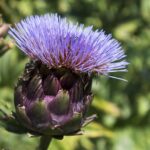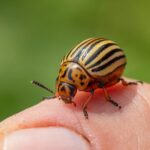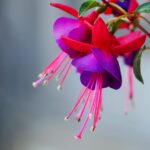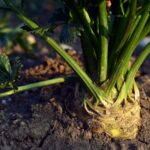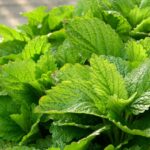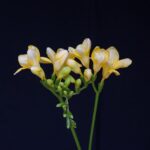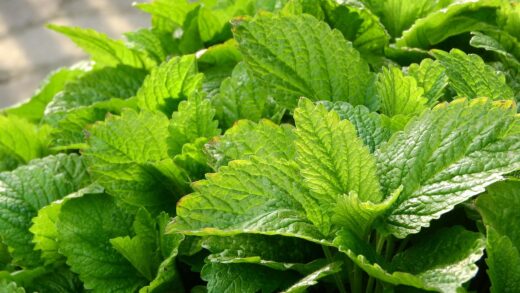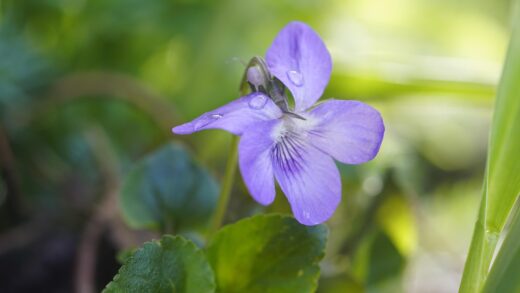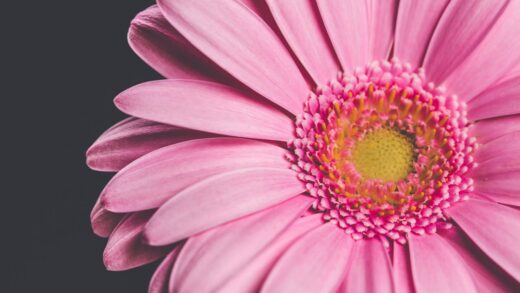The introduction of the Kousa dogwood (Cornus kousa) in modern horticulture is synonymous with the concept of four-season ornamental value. This stunning ornamental tree or large shrub, originating from Asia, is an increasingly popular choice among garden enthusiasts, thanks to its unique appearance and relative ease of care. The true appeal of the plant lies in its ability to showcase something new and beautiful in every season, from its spring blossoms to its summer fruit, autumn foliage color, and its exfoliating bark that provides winter interest. With proper care, the Kousa dogwood can become the jewel of the garden, bringing joy to its owner for decades.
The most spectacular feature of the Kousa dogwood is its inflorescence, which appears in late spring or early summer. What initially appear to be large, white or pinkish flower petals are actually four pointed bracts that surround the true, tiny, greenish-yellow flowers in a central cluster. These bracts provide a decorative display for weeks, lending the plant an elegant, star-like shape, which is also reflected in its name. This floral splendor is not only aesthetically outstanding but also attractive to pollinators, contributing to the garden’s biodiversity.
During the summer, the pollinated flowers slowly develop into distinctive, edible fruits. These raspberry- or small lychee-like berries, about 2-3 centimeters in diameter and pinkish-red in color, are not only ornamental but also have a pleasant, sweet taste reminiscent of tropical fruits when ripe. Although rarely found in commercial markets, the fruit grown in one’s own garden can be a special treat. The appearance of the fruit further enhances the plant’s appeal, creating a contrast with the dark green foliage.
With the arrival of autumn, the Kousa dogwood reveals another of its facets as its foliage begins to glow in breathtaking colors. The leaves display a spectrum of shades from scarlet red to deep burgundy and purplish tones, creating a true splash of color in the autumn garden. This cavalcade of color often lasts for weeks before the leaves fall, revealing the plant’s interesting branch structure and bark. The autumn foliage of the Kousa dogwood is one of its most valuable attributes, rivaling that of the most popular autumn ornamental plants.
Choosing the ideal planting location
The foundation for the long-term health and abundant flowering of the Kousa dogwood is the careful selection of the right planting site. Although the plant is relatively adaptable, providing certain conditions will ensure the most beautiful development. In terms of light, the Kousa dogwood prefers a sunny or partially shaded location. In the hotter summers of the Carpathian Basin, it is particularly grateful for filtered light or light shade in the afternoon hours, which protects its leaves from scorching and stress.
Soil quality is a crucial factor for the Kousa dogwood. The most ideal soil is well-drained, loose-structured, and rich in humus and nutrients. It does not tolerate standing water or overly compact, clayey soil, as its roots can easily begin to rot. Before planting, it is advisable to improve the soil with organic matter, such as mature compost or high-quality potting soil, to ensure the proper structure and nutrient content. Regarding soil pH, it prefers a slightly acidic to neutral medium (pH 6.0-7.0).
Providing adequate space is also an important consideration. Over time, the Kousa dogwood develops into a large shrub or a small tree, 5-8 meters tall, so its final size must be considered at the time of planting. Leave enough space around it for its branch system to develop freely, without the need for drastic pruning later due to neighboring plants or buildings. Proper spacing is not only important from an aesthetic point of view but also for ensuring good air circulation, which helps prevent the development of fungal diseases.
Last but not least, consider the microclimate as well. The Kousa dogwood, especially young specimens, can be sensitive to strong, drying winds and winter frosts. A sheltered, milder location is ideal for it. Avoid frost pockets and low-lying areas where cold air can stagnate. A location near a house wall or under the cover of larger trees generally provides more favorable conditions for successful overwintering and undisturbed development, contributing to the plant’s long life.
The professional steps of planting
The best time to plant a Kousa dogwood is in the spring or autumn, when the soil is still sufficiently warm, but extreme heat or frost does not yet pose a threat. Container-grown plants can be planted almost year-round during frost-free periods, but spring and autumn planting ensures the most undisturbed rooting. Before planting, water the plant thoroughly so that its root ball is completely soaked. This step makes it easier to remove the plant from the container and reduces planting stress.
The size of the planting hole is critical for successful establishment. A golden rule is that the hole should be at least twice as wide but only as deep as the plant’s root ball. Planting too deep is one of the most common mistakes, which can lead to root collar rot and the plant’s demise. The root collar, the point where the trunk meets the roots, should be level with or slightly above the soil surface. This ensures adequate oxygen supply to the upper part of the roots.
Once you have dug the appropriately sized hole, place the plant in it after carefully removing it from the container. Gently loosen the circling, matted roots on the edge of the root ball so they can spread into the new soil. To backfill the hole, use a mixture of the original excavated soil and high-quality compost or potting soil. Backfill the soil gradually in layers, tamping it down lightly to eliminate air pockets around the roots, which could lead to them drying out.
The final but essential step of planting is a thorough watering, or soaking. Immediately after planting, give the plant a generous amount of water, at least 10-15 liters, to settle the soil around the roots and provide the plant with the necessary moisture right away. In the weeks following planting, keep the soil consistently slightly moist. A small watering basin created around the trunk can help direct water directly to the root zone. Covering the soil surface with mulch helps to retain moisture and prevent weed growth.
Watering and nutrient supply
The Kousa dogwood has a moderate water requirement, but a balanced water supply is essential for its proper development, especially for young, newly planted specimens. In the first one or two years, until its root system strengthens, it requires regular watering, especially during dry, drought-like periods. It is best to water deeply but less frequently, allowing the water to penetrate the deeper soil layers and encouraging the roots to grow deeper. Overwatering and standing water should be avoided at all costs, as this can lead to root rot.
Older, well-established trees tolerate drought much better, but they appreciate supplementary watering during long, rainless summer periods. Wilting leaves or browning of the leaf edges can indicate a lack of water. Rainwater is the most ideal for watering, but tap water is also suitable. It is important to apply the water directly to the root zone, avoiding unnecessary wetting of the foliage, which can promote the spread of fungal diseases. Mulching greatly helps in retaining soil moisture.
In terms of nutrient supply, the Kousa dogwood is not among the particularly nutrient-demanding plants. If the soil was properly prepared with organic matter at the time of planting, supplementary nutrient application is usually not necessary in the first few years. Excessive fertilization, especially with high-nitrogen fertilizers, should be avoided as it stimulates lush foliage growth at the expense of flowering and makes the plant more susceptible to diseases. The principle of “less is more” is particularly true here.
If the plant’s growth is slow, its leaves are yellowing, or flowering is absent, supplementary nutrients may be needed. In the spring, at the beginning of the growing season, applying a balanced, slow-release, complex fertilizer that also contains micronutrients in appropriate proportions is recommended. Alternatively, a thin layer of mature compost spread on the soil around the trunk provides an excellent, natural source of nutrients. Nutrient application should always be done according to the manufacturer’s instructions, followed by a thorough watering of the soil.
The art and science of pruning
One of the most advantageous features of the Kousa dogwood is that it requires minimal pruning, as its natural growth form is already extremely aesthetic and harmonious. The primary purpose of pruning is not to shape the plant, but to maintain its health and improve air circulation. The most important pruning task is to remove dead, diseased, or damaged branches, which can be done at any time of the year as soon as the problem is noticed. This cleanup pruning prevents pathogens from entering and spreading within the plant.
The timing of formative or corrective pruning is crucial. The Kousa dogwood develops its flower buds on the previous year’s shoots, so spring pruning before flowering can result in the loss of the next year’s floral display. The most ideal time for pruning is immediately after flowering. At this time, you can remove crossing branches that rub against each other, as well as shoots that spoil the crown’s ventilation or symmetry. A light thinning prune can help light penetrate into the interior of the crown.
Always use sharp, clean, and disinfected tools for pruning, such as pruning shears or a pruning saw. Dull tools damage the plant tissues, which makes wound healing difficult and opens the door to infections. It is advisable to treat larger cut surfaces with a wound sealant to protect the tree from pathogens and dehydration. The cut should always be made close to the trunk or a branch junction, along the so-called branch collar, at an angle, so that water can run off the surface.
In its youth, a foundational pruning may be necessary to establish the desired shape, whether it be a multi-stemmed shrub or a single-trunk small tree. If you are growing a tree seedling, gradually remove the lower side shoots over the first few years until the desired trunk height is reached. However, it is important never to overdo it; the natural, loose branch structure of the Kousa dogwood is its main charm. It does not tolerate drastic pruning well and it is generally not necessary.
Protection against diseases and pests
The Kousa dogwood is generally a resilient ornamental plant with few plant protection issues, which greatly contributes to its popularity. It is much less susceptible to fungal diseases than its American relative, the flowering dogwood (Cornus florida). Nevertheless, under certain conditions, especially if the plant is under stress, problems can occur. Prevention is always the most effective control strategy, starting with the selection of the right growing site and proper care.
The most common fungal disease that can affect it is powdery mildew, especially in humid, warm summers and in poorly ventilated locations. A white, powdery coating on the leaves indicates the infection. For prevention, ensure good air circulation around the plant and avoid watering the foliage in the evening. In case of a mild infection, removing the affected leaves may be sufficient. In more severe cases, sulfur-based or other fungicides for powdery mildew can be used, but choosing resistant varieties is the best long-term solution.
Another potential problem is anthracnose, although many Kousa dogwood varieties are resistant to this disease. This fungal infection causes irregular, dark spots on the leaves, which later die and fall out. The infection can also affect shoots and flowers. The basis of control here is also prevention: removing and destroying fallen, infected foliage, and making the crown airy through pruning. If necessary, copper-based sprays can be applied at the beginning of the growing season.
Pests rarely cause serious problems for the Kousa dogwood. Occasionally, aphids may settle on the fresh shoots, but they usually do not cause significant damage, and their natural enemies, such as ladybugs, keep them in check. The appearance of scale insects can be a more serious problem, as they are harder to remove. For a mild infestation, rubbing off the insects or applying a horticultural oil spray in late winter or early spring can help. Healthy plants kept in good condition are much more resistant to pest attacks.
Propagation methods and winter preparation
The Kousa dogwood can be propagated in several ways, although most methods require patience and some horticultural experience. The most common method is by seed, but it is important to know that the seeds have a double dormancy, meaning they need both a warm and a cold period to germinate. It is advisable to first keep the seeds collected and cleaned in the autumn in a warm, moist medium for a few months (warm stratification), and then in a cold, moist medium for several months (cold stratification). Germination can thus take up to 18 months.
A faster and more reliable method is taking softwood cuttings in early summer. For this, cut 10-15 cm long pieces from the tips of the current year’s shoots, remove the lower leaves, and dip the cut surface in rooting hormone. Stick the cuttings in a moist, loose medium, such as a mixture of perlite and peat, and keep them in a warm, bright place with high humidity (for example, covered with a plastic bag). Rooting usually takes 6-8 weeks, and this method ensures that the new plant is genetically identical to the parent plant.
Grafting is also a common propagation technique, especially for cultivated varieties that may not pass on the desired traits when grown from seed. A scion of the noble variety is usually grafted onto a rootstock of a Kousa dogwood grown from seed or another compatible dogwood species. This method requires expertise but guarantees varietal identity and often results in more vigorous, resistant plants. Layering is also a possible option, where a low-growing branch is bent down to the ground and fixed until it roots.
Winter preparation is particularly important for young, newly planted Kousa dogwoods. During the first few winters, it is advisable to cover the base of the plant thickly with mulch, leaves, or straw to protect the root zone from freezing. This protective layer helps to stabilize the soil temperature and retain moisture. Older, established specimens are fully hardy and generally do not require special winter protection. A winter snow cover provides natural insulation, but thick, heavy snow should be gently shaken off the branches to prevent breakage.

